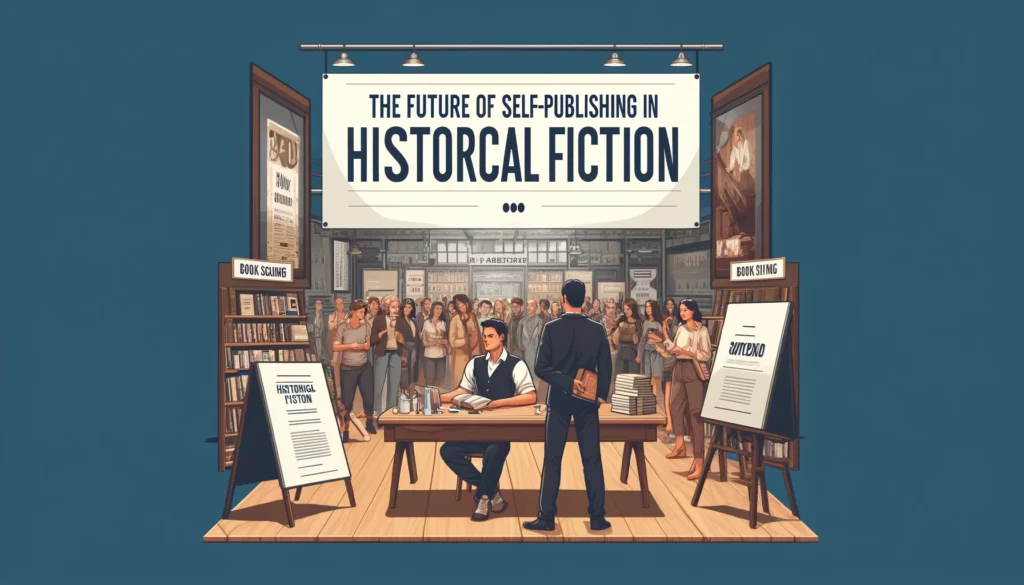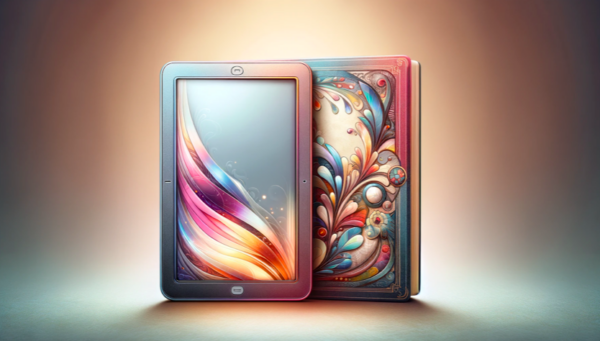In recent years, self-publishing has emerged as a powerful alternative to traditional publishing, offering writers unprecedented control over their work. This trend is particularly significant for historical fiction authors, a genre that requires meticulous research and often involves niche audiences. Self-publishing allows these authors to maintain creative control, ensuring historical accuracy while weaving compelling narratives.
The rise of digital platforms like Spines, Amazon Kindle Direct Publishing, and IngramSpark has democratized the publishing process, enabling writers to bypass traditional gatekeepers. This shift is especially relevant today, as more authors seek the freedom to self-publish on their terms and connect directly with readers. Self-publishing your historical fiction facilitates the preservation of historical authenticity and accelerates the journey from manuscript to market. This dynamic approach to publishing empowers authors to share diverse historical perspectives, reach global audiences, and retain a larger share of their royalties.
Understanding Historical Fiction
Historical fiction is a serious literary fiction genre in which the story is set in a time before the author’s own, often incorporating historical events, figures, and settings. The genre aims to transport readers to a different era, providing a sense of immersion in a particular historical context. By blending fictional narratives with real historical elements, historical fiction offers entertainment and education, vividly bringing the past to life.
The significance of historical fiction in literature lies in its ability to bridge the gap between past and present. It allows readers to explore different periods and cultures, fostering a deeper understanding of history and its impact on the human experience. For writers, historical fiction presents the challenge and opportunity to meticulously research and recreate bygone eras while crafting engaging and relatable stories. This combination of fact and fiction can shed light on lesser-known historical events and perspectives, making history accessible and compelling to a broad audience.
Historical fiction’s appeal to readers is multifaceted. Many are drawn to the genre for its rich, immersive settings and the chance to learn about history in a narrative format. The genre’s ability to evoke a strong sense of place and time can make for an absorbing reading experience. Additionally, historical fiction often tackles universal themes such as love, conflict, and survival, which resonate across different periods. The genre’s inherent blend of education and entertainment makes it popular among readers who seek both intellectual stimulation and storytelling pleasure.
The genre of historical novels encompasses several subgenres, each offering a unique take on historical storytelling. Historical romance focuses on love stories set in the past, combining the drama of historical events with the emotional depth of romantic relationships. Historical thrillers incorporate suspense and intrigue, often revolving around significant historical events or figures. Regency fiction centers on the early 19th century, particularly in England, highlighting the social customs and romantic entanglements of the period. Other subgenres include historical fantasy, which introduces magical elements into historical settings, and military historical fiction, which focuses on wars and battles throughout history.
These subgenres allow historical fiction writers to explore a wide range of topics and styles, catering to diverse reader interests. Whether it’s the sweeping epics of ancient civilizations, the intricate social dynamics of the Regency era, or the gritty realities of World War II, the historical fiction subgenres offer a vast and varied landscape for storytelling.
Your Publishing Journey Awaits – Start NowThe Challenges of Writing Historical Fiction
Writing historical fiction presents unique challenges that set it apart from other genres. The foundation of any historical fiction work is meticulous historical research and accuracy. Authors must immerse themselves in the time period they are writing about, ensuring that the details of daily life, cultural norms, language, and major events are accurately portrayed. This level of research is crucial because readers of historical fiction often expect a high degree of authenticity, and any historical inaccuracies can disrupt their immersion in the story.
Historical research involves delving into primary sources such as letters, diaries, official records, and contemporary literature, as well as secondary sources like history books and scholarly articles. Writers must sift through these sources to extract relevant information and integrate it seamlessly into their narrative. This process can be time-consuming and daunting, but it is essential for creating a believable and engaging historical setting.
The Main Challenges
One of the primary challenges in historical fiction is balancing fictional elements with historical facts. While the historical context provides a rich backdrop, the characters and plot must be compelling enough to captivate the reader. Writers must decide how much creative license to take without compromising historical accuracy. This balance in writing historical fiction is delicate; too much focus on historical detail can overwhelm the narrative, while too much fiction can lead to anachronisms and historical inaccuracies.
To achieve this balance, authors often create fictional characters who interact with real historical figures and events. This allows for a blend of factual and imaginative storytelling, giving writers the flexibility to develop their plots while remaining grounded in historical reality. Authors must also be mindful of the historical record and avoid altering significant events or the actions of real historical figures without clear justification. Respecting the integrity of history while weaving a fictional narrative requires skill and sensitivity.
Another significant obstacle in writing historical fiction is accurately depicting historical periods, settings, and figures. Each historical period has its unique characteristics, from architecture and fashion to social hierarchies and political landscapes. Writers must recreate these aspects convincingly to transport readers to the past. This involves not only describing physical settings but also capturing the zeitgeist—the prevailing attitudes, beliefs, and emotions of the time.
Creating authentic characters from different historical periods can be challenging. Authors need to understand the social norms and expectations that shape people’s behaviors and decisions. Characters’ dialogue, mannerisms, and motivations must reflect their historical context, which can be difficult for contemporary writers to grasp. Additionally, depicting real historical figures requires careful consideration to portray them accurately and respectfully, based on historical evidence.
One common obstacle is the limited availability of sources for certain historical periods or figures, especially those that have been less documented or studied. This scarcity can make it difficult to gain a comprehensive understanding of the era or individual in question. In such cases, writers must rely on educated guesses and informed speculation, always striving to remain as faithful to the historical record as possible.
Moreover, authors must navigate the potential for cultural and historical bias in their sources. Historical records often reflect the perspectives of dominant groups, necessitating a critical approach to source material. Writers must read between the lines to uncover marginalized voices and perspectives, ensuring a more balanced and inclusive representation of history.
In conclusion, writing historical fiction demands a rigorous commitment to research, a nuanced balance between fact and fiction, and a deep understanding of the historical context. Despite these challenges, the genre’s ability to bring history to life through compelling storytelling makes it a rewarding endeavor for both writers and readers.
The Self-Publishing Process
The self-publishing process involves several detailed steps, each crucial for transforming a manuscript into a finished book available to readers. Understanding these steps can help authors navigate the journey effectively and take full advantage of the benefits self-publishing offers.
1. Manuscript Preparation
The first step is to complete a polished manuscript. This involves drafting, revising, and refining the story until it is ready for publication. Writers should focus on narrative flow, character development, historical accuracy, and eliminating any plot inconsistencies.
2. Editing and Proofreading
Editing is a critical phase in self-publishing. A good editor helps polish the manuscript, catching errors in grammar, punctuation, and spelling, as well as addressing structural issues, pacing problems, and historical inaccuracies. There are different types of editing services available:
- Developmental Editing: Focuses on the overall structure and content of the manuscript.
- Copyediting: Addresses grammar, syntax, and style consistency.
- Proofreading: The final check for typos and minor errors before publication.
Hiring a professional editor is an investment that can significantly improve the quality of the book and enhance its credibility.
3. Cover Design and Formatting
A professionally designed cover is essential for attracting readers and conveying the book’s genre and tone. Authors can hire a cover designer or use design tools provided by self-publishing platforms. Interior formatting is also crucial for both print and digital versions to ensure readability and a professional appearance. Formatting includes setting margins, fonts, and chapter headings appropriately.
4. Choosing a Self-Publishing Platform
Authors must choose a platform to publish their book. Popular options include:
- Amazon Kindle Direct Publishing (KDP): Dominant in the e-book market, offering both eBook and print-on-demand services.
- IngramSpark: Known for wide distribution, including to brick-and-mortar bookstores.
- Spines Publishing Platform: Revolutionising publishing through its AI-powered platform, simple and fast.
Each platform has its own set of features, royalties, and distribution options, so authors should select the one that best meets their needs.
5. Setting the Price and Distribution
Determining the book’s price involves considering production costs, market standards, and author goals. Self-publishing allows authors to control pricing and distribution channels. They can choose to sell exclusively on one platform for higher royalties or distribute widely across multiple retailers.
6. Uploading the Manuscript and Cover
Once the manuscript and cover are ready, they need to be uploaded to the chosen self-publishing platform. This process typically involves:
- Filling out metadata (title, author name, keywords, categories).
- Uploading the formatted manuscript and cover.
- Previewing the final product to ensure there are no formatting issues.
7. Marketing and Promotion
Successful self-publishing requires active marketing. Authors need to create a marketing plan, which might include:
- Building an Author Platform: Establishing a website, blog, and social media presence.
- Email Marketing: Collecting email addresses and sending newsletters to build a reader base.
- Book Launch Strategies: Organizing virtual book launches, securing book reviews, and running promotional campaigns.
- Advertising: Utilizing platforms like Amazon Ads and Facebook Ads to reach potential readers.
Self-Publishing vs. Traditional Publishing
Self-publishing offers several advantages over traditional publishing:
- Control Over Content: Authors have full control over their manuscript, cover design, and marketing strategies.
- Speed to Market: Self-publishing allows for faster release since there are no lengthy submission processes or publisher schedules to follow.
- Higher Royalties: Self-published authors typically earn higher royalties per sale compared to traditionally published authors.
However, self-publishing also requires authors to handle all aspects of the publishing process themselves, from editing to marketing, which can be time-consuming and demanding.
The Role of a Good Editor in Self-Publishing
A good editor is indispensable in the self-publishing process. Editors not only correct grammatical errors but also help refine the narrative structure, improve character development, and ensure historical accuracy. They provide an objective perspective, identifying weaknesses that the author might overlook. Collaborating with a skilled editor can elevate the quality of the manuscript, making it more engaging and professionally polished. This, in turn, increases the book’s chances of success in a competitive market.
In summary, self-publishing empowers authors with creative control and faster publication times, but it also demands a comprehensive approach to editing, design, and marketing. By understanding and managing these elements effectively, authors can successfully bring their historical fiction works to a wide and appreciative audience.
Benefits of Self-Publishing Historical Fiction
Self-publishing historical fiction offers numerous advantages that can significantly enhance the writing and publishing experience for authors. These benefits range from creative control and financial incentives to marketing autonomy and post-publication flexibility. Here are some key benefits of self-publishing historical fiction:
Your Publishing Journey Awaits – Start Now1. Creative Control: Maintaining Accuracy and Creative License
One of the most significant advantages of self-publishing is the unparalleled creative control it offers. Authors can ensure that their work maintains historical accuracy while exercising their creative license. This control extends to every aspect of the book, from the narrative and character development to the cover design and marketing strategies.
Maintaining accuracy is crucial in historical fiction, as readers expect a faithful representation of historical events, settings, and figures. Self-publishing allows authors to conduct thorough research and decide how to incorporate factual details into their stories. They can choose to emphasize certain historical aspects or explore lesser-known events without the constraints often imposed by traditional publishers.
Moreover, creative license enables authors to weave compelling narratives that resonate with readers while staying true to historical contexts. This balance between historical fact and fiction is essential for creating engaging historical fiction. Self-published authors can make narrative decisions that best serve their story, ensuring it is both educational and entertaining.
2. Financial Benefits: Better Royalty Rates and Pricing Control
Self-publishing offers significant financial benefits, primarily through better royalty rates and pricing control. Traditional publishing typically offers authors a royalty rate of 10-15%, while self-publishing platforms like Amazon KDP can provide royalties of up to 70%. This substantial difference allows self-published authors to earn more per sale, which can be particularly advantageous for those who build a loyal reader base.
Authors also have full control over their book’s pricing. They can set competitive prices that attract readers while maximizing their earnings. This flexibility extends to running promotions and discounts, enabling authors to experiment with different pricing strategies to boost sales and visibility.
Furthermore, self-publishing eliminates many of the costs associated with traditional publishing, such as agent fees and lengthy contract negotiations. Authors retain a larger share of their profits and can reinvest these earnings into marketing, professional editing, or future projects.
3. Speed to Market: Faster Publication Process
The speed to market is another compelling advantage of self-publishing. Traditional publishing can be a lengthy process, often taking years from manuscript submission to book release due to multiple rounds of editing, design, and marketing preparation. In contrast, self-publishing allows authors to bring their books to market much faster.
Once a manuscript is ready, authors can upload their book to a self-publishing platform and make it available to readers within days or weeks. This expedited process is especially beneficial for historical fiction writers who want to capitalize on current trends or historical anniversaries. Rapid publication ensures that the book remains relevant and timely, capturing the interest of readers eager for fresh content.
4. Marketing and Distribution: Direct Engagement with Readers
Self-publishing provides authors with direct engagement with their readers and greater control over marketing strategies. Traditional publishers typically handle marketing, but their efforts may not always align with the author’s vision or reach the intended audience effectively. Self-published authors, on the other hand, can tailor their marketing efforts to target specific reader demographics.
Building an author platform through social media, blogs, and email newsletters allows self-published authors to connect with their audience, foster a loyal reader base, and receive immediate feedback. Authors can run targeted ad campaigns, organize virtual book tours, and collaborate with book bloggers and influencers to boost visibility and sales.
Control over distribution is another benefit. Self-published authors can choose to distribute their books across multiple platforms, including Amazon, Barnes & Noble, Kobo, and Apple Books, or focus on a single platform for higher royalties. Wide distribution ensures that books are available to a global audience, increasing the potential for international sales.
5. Flexibility: Ability to Revise and Update Work Post-Publication
One of the unique advantages of self-publishing is the ability to revise and update work post-publication. Traditional publishing often involves lengthy processes to release new editions or correct errors, but self-publishing platforms allow authors to make changes quickly and efficiently.
If an author discovers historical inaccuracies, receives reader feedback, or decides to add new content, they can easily update the manuscript and re-upload it. This flexibility ensures that the book remains accurate and relevant, enhancing the overall reader experience. Authors can also release updated editions to coincide with new historical research or anniversaries, keeping their work fresh and engaging.
Additionally, self-publishing allows authors to respond to market trends and reader preferences more dynamically. They can experiment with different genres, themes, and formats without the constraints of a traditional publishing contract. This adaptability can lead to increased creativity and innovation, helping authors build a diverse portfolio that appeals to a broad audience.
Self-publishing historical fiction offers numerous benefits that empower authors to take full control of their creative and publishing processes. From maintaining historical accuracy and exercising creative license to enjoying better financial rewards and faster publication times, self-publishing provides a viable and attractive alternative to traditional publishing. By leveraging these advantages, historical fiction writers can share their stories with the world, connect directly with readers, and achieve greater success on their terms.

Marketing Your Self-Published Historical Fiction Novel
Marketing your self-published historical fiction novel effectively is crucial to reaching your target audience and achieving commercial success. Here are some strategies to help you connect with readers who are passionate about historical fiction.
1. Identifying and Reaching Your Target Audience
The first step in marketing your historical novel is identifying your target audience. Consider the specific time period, historical events, or figures featured in your book. This will help you narrow down your audience to readers who have a particular interest in those aspects of history. Once you have a clear picture of your ideal reader, you can tailor your marketing efforts to reach them more effectively.
2. Utilizing Social Media
Social media platforms are powerful tools for marketing your novel. Establish a presence on major platforms like Facebook, Twitter, Instagram, and Pinterest, where you can engage with readers and promote your book. Here are some tips for leveraging social media:
- Facebook: Create an author page to share updates, historical insights, and engage with readers through posts and comments. Join historical fiction groups to connect with a community of enthusiasts.
- X, Twitter: Use hashtags related to historical fiction and specific historical events or figures to reach a broader audience. Participate in writing and book promotion hashtags like #HistFic and #IndieAuthor.
- Instagram: Share visually appealing content, such as cover reveals, quotes, and historical photos related to your novel’s setting. Use stories and reels to give behind-the-scenes looks at your writing process.
- Pinterest: Create boards with images and articles related to your book’s themes, settings, and characters. This can attract readers who are interested in those topics.
3. Developing an Author Website
An author’s website serves as your online hub, providing readers with information about you and your work. Include a blog where you can post articles about the historical context of your novel, insights into your writing process, and updates on upcoming releases. Your website should also feature a mailing list sign-up form to build an email list of interested readers. Regular newsletters can keep your audience engaged with exclusive content, book announcements, and promotions.
Your Publishing Journey Awaits – Start Now4. Engaging with Historical Fiction Blogs
Historical fiction blogs are valuable platforms for reaching readers who are already interested in the genre. Research and reach out to bloggers who review historical fiction, offering them a free copy of your book in exchange for an honest review. Guest posting on these blogs can also help you gain exposure and establish your authority as a historical fiction writer. Share your expertise on relevant historical topics or insights into your writing journey to attract readers to your work.
5. Importance of Cover Design
A professionally designed cover is crucial for attracting readers and conveying the essence of your historical fiction novel. Your cover should reflect the time period and genre, making it immediately recognizable to potential readers. High-quality cover design can make your book stand out in a crowded market and increase the likelihood of readers picking it up. Consider hiring a professional designer with experience in historical fiction to ensure your cover is visually appealing and accurately represents your story.
6. Crafting a Compelling Book Description
The book description is often the first thing potential readers see after the cover, making it a critical element of your marketing strategy. Write a compelling, concise description that highlights the main plot points, historical setting, and unique aspects of your novel. Use vivid language to draw readers in and leave them wanting to know more. Include a strong hook in the opening sentence and end with a call to action, encouraging readers to purchase or read a sample of your book.
7. Running Promotions and Advertisements
Consider running promotions and advertisements to boost your book’s visibility. Platforms like Amazon Kindle Direct Publishing (KDP) allow you to run limited-time discounts or free book promotions to attract new readers. Additionally, invest in targeted advertisements on social media and book promotion sites to reach a wider audience. Monitor the performance of your ads and adjust your strategy based on what works best for your book.
8. Engaging with Readers
Building a loyal reader base involves consistent engagement. Respond to reader comments and messages on social media, and participate in discussions about historical fiction. Hosting virtual book clubs or Q&A sessions can create a sense of community and keep readers invested in your work.
Marketing your self-published historical fiction novel requires a multifaceted approach. By identifying your target audience, utilizing social media, developing an author website, engaging with historical fiction blogs, focusing on cover design and book description, and running promotions, you can effectively reach and connect with readers who are eager to explore the worlds you create.
Tools and Resources for Self-Publishing Historical Fiction
Self-publishing historical fiction can be a complex process, but with the right tools and resources, it becomes much more manageable. Here are some essential platforms, research tools, and support communities for authors.
1. Useful Tools and Platforms
- Spines Publishing Platform: Spines is an innovative self-publishing platform that has simplified the publishing route enhanced by AI. Spines offers comprehensive tools for manuscript formatting, cover design, and marketing.
- Amazon Kindle Direct Publishing (KDP): This is one of the most popular self-publishing platforms, offering both eBook and print-on-demand services. It provides a user-friendly interface and access to Amazon’s vast customer base.
- IngramSpark: Known for its wide distribution network, IngramSpark allows authors to publish both print and eBooks, reaching bookstores, libraries, and online retailers globally.
- Draft2Digital: This platform simplifies the eBook publishing process and distributes it to major retailers like Apple Books, Barnes & Noble, and Kobo.
- Scrivener: A powerful writing software designed specifically for authors, Scrivener helps with organizing research, drafting, and editing.
2. Resources for Historical Research and Writing Aids
- Google Scholar: A free search engine for scholarly articles, theses, books, and conference papers, which can be invaluable for historical research.
- Project Gutenberg: Offers free access to thousands of historical texts, which can provide context and background information.
- JSTOR: A digital library for academic journals, books, and primary sources, though some content may require a subscription.
- The History Quill: A platform specifically for historical fiction writers, offering resources, advice, and support tailored to the genre.
- Historical Atlases and Maps: Websites like David Rumsey Map Collection provide access to historical maps, which are crucial for setting accurate scenes and understanding geographical contexts.
3. Communities and Support Groups for Self-Published Authors
- Alliance of Independent Authors (ALLi): A global nonprofit organization that offers advice, support, and advocacy for self-published authors.
- Kboards: An online community of Kindle users where self-published authors share tips, experiences, and advice.
- Goodreads Groups: There are many groups on Goodreads dedicated to historical fiction writers and readers, providing opportunities for networking and promotion.
- Wattpad: A platform where authors can publish their works for free, gain feedback from readers, and build a following.
These tools and resources can help self-published authors navigate the complex landscape of historical fiction, from initial research to final publication and marketing. By leveraging these platforms and communities, authors can enhance their writing process, improve their historical accuracy, and connect with a supportive network of fellow writers and readers.
Common Mistakes to Avoid in Self-Publishing Historical Fiction
Self-publishing historical fiction offers many benefits, but it also comes with potential pitfalls. Here are some common mistakes to avoid and tips on how to improve the publishing process.
1. Poor Research
Historical fiction demands rigorous research to ensure accuracy and authenticity. Inadequate research can lead to anachronisms, factual errors, and a lack of credibility, which can alienate readers who are knowledgeable about the period.
Tip: Dedicate sufficient time to research your chosen era. Utilize primary sources such as letters, diaries, and official documents, as well as secondary sources like history books and scholarly articles. Cross-reference information to confirm accuracy and consider consulting experts or historians if needed.
2. Weak Editing
Skipping professional editing is a major mistake in self-publishing. Errors in grammar, punctuation, and historical details can undermine the quality of your book and distract readers.
Tip: Invest in professional editing services. There are different types of editing to consider: developmental editing for overall structure and content, copyediting for language and style, and proofreading for final error checks. A good editor can significantly enhance the quality of your manuscript.
3. Ineffective Marketing
Many self-published authors struggle with marketing, leading to poor visibility and low sales. Ineffective marketing can result from a lack of understanding of your target audience, inconsistent promotional efforts, or not leveraging the right platforms.
Tip: Develop a comprehensive marketing plan before your book launch. Identify your target audience and tailor your marketing strategies to reach them. Utilize social media, author websites, historical fiction blogs, and book promotion sites to maximize your reach. Engage with readers through newsletters, virtual book tours, and book giveaways to build a loyal audience.
4. Neglecting Cover Design and Book Description
A poorly designed cover and weak book description can deter potential readers. Your cover is the first impression of your book, and a compelling description can persuade readers to make a purchase.
Tip: Hire a professional cover designer to create an eye-catching and genre-appropriate cover. Craft a concise, engaging book description that highlights the main plot points and unique aspects of your story. Use vivid language and include a strong hook to draw readers in.
5. Overlooking Reader Engagement
Ignoring reader feedback and not engaging with your audience can limit your book’s success. Building a community around your work is crucial for sustained visibility and sales.
Tip: Actively engage with your readers through social media, author websites, blog posts, and email newsletters. Respond to comments and messages, participate in discussions, and host events like virtual book clubs or Q&A sessions to foster a sense of community and loyalty among your readers.
By avoiding these common mistakes and implementing these tips, you can improve your self-publishing process and enhance the success of your historical fiction novel.
Your Publishing Journey Awaits – Start Now
The Future of Self-Publishing in Historical Fiction
The future of self-publishing in historical fiction looks promising, shaped by evolving trends and changes in the publishing industry that offer new opportunities for authors.
1. Trends in Self-Publishing and Historical Fiction
The self-publishing landscape is continuously evolving, with several key trends emerging. One significant trend is the increasing quality of self-published books. As more authors invest in professional editing, cover design, and marketing, the gap between traditionally published and self-published books is narrowing. This trend is particularly important in historical fiction, where accuracy and presentation are crucial.
Another trend is the growing popularity of niche markets. Historical fiction authors can now easily reach specific audiences interested in particular periods, events, or regions. This has been facilitated by advanced algorithms on platforms like Amazon, which help readers discover books tailored to their interests. Additionally, the rise of audiobooks has opened a new avenue for self-published authors. Historical fiction, with its rich narratives and immersive settings, translates well to the audio format, expanding the reach and accessibility of these stories.
2. Potential Changes in the Publishing Industry
Several potential changes in the publishing industry could further impact self-published historical fiction authors. First, advancements in technology and digital tools will continue to democratize the publishing process. Enhanced AI-driven editing tools, improved digital formatting software, and sophisticated marketing analytics will empower authors to produce and promote their books more effectively.
Moreover, the shift towards direct-to-consumer sales is expected to grow. Authors will increasingly use personal websites, social media, and email newsletters to sell books directly to readers, bypassing traditional retailers. This trend allows for higher profit margins and stronger relationships with readers.
The industry might also see more collaborations between self-published authors and traditional publishers. Hybrid publishing models, where authors retain creative control while benefiting from the publisher’s distribution and marketing expertise, could become more common. This model offers the best of both worlds, combining the independence of self-publishing with the resources of traditional publishing.
3. Implications for Self-Published Authors
For self-published historical fiction authors, these trends and changes signify a wealth of opportunities. The increasing acceptance and quality of self-published works mean that authors can compete on a more level playing field. Niche marketing and direct-to-consumer sales offer ways to connect deeply with target audiences and build loyal reader bases.
Authors should stay abreast of technological advancements and industry shifts, leveraging new tools and platforms to enhance their publishing efforts. Embracing audiobook production and exploring hybrid publishing models can also provide additional revenue streams and broader exposure.
In conclusion, the future of self-publishing in historical fiction is bright, with trends and industry changes favoring independent authors. By adapting to these developments and utilizing available resources, self-published authors can successfully navigate the evolving landscape and continue to share compelling historical narratives with readers worldwide.
Spines: Revolutionizing the Self-Publishing Landscape
The publishing world is undergoing a dramatic transformation, with new technologies paving the way for innovative solutions that cater to the diverse needs of authors. Among these advancements, Spines, formerly known as BooxAI, stands out as a premier self-publishing platform powered by Artificial Intelligence. Offering a blend of affordability, speed, and comprehensive support, Spines is revolutionizing the self-publishing process, making it an ideal choice for historical fiction authors looking to bring their stories to life.
Speed and Efficiency
One of the most significant advantages of Spines is its ability to streamline the publishing process, enabling authors to transition from manuscript to published book in less than 30 days. This rapid turnaround is particularly beneficial for historical fiction writers who want to capitalize on current trends or historical anniversaries, ensuring their work remains timely and relevant.
Affordability
Spines is also highly cost-effective, offering comprehensive plans designed to be budget-friendly. The AI-driven platform significantly lowers production costs, making professional publishing accessible to authors at a fraction of traditional industry prices. This affordability allows self-published authors to maximize their profits while maintaining high-quality standards.
Dedicated Support
Authors using Spines benefit from dedicated support throughout their publishing journey. Each author is assigned a personal production manager who provides guidance at every step, ensuring a smooth and stress-free experience. This level of support is crucial for both new and experienced authors, helping them navigate the complexities of self-publishing with confidence.
All Formats AI-Generated
Spines offers a complete suite of publishing services, including Print-on-Demand (POD), eBooks, and audiobooks, all powered by advanced AI technology. This ensures that authors can reach their audience across various formats, expanding their market reach and enhancing reader engagement.
Global Distribution
With Spines, authors can achieve global distribution across 100+ channels, including top retailers like Amazon and Barnes & Noble. This extensive network ensures that historical fiction novels can reach a worldwide audience, increasing visibility and sales potential.
User-Friendly Dashboard
The platform’s user-friendly dashboard makes it easy for authors to manage the entire publishing process, regardless of their technical expertise. From proofreading and editing to formatting and cover design, Spines provides all the tools necessary for producing a professional-quality book.
Open for All Authors
Whether you are an emerging writer or an established author, Spines is tailored for your success. The platform’s inclusive approach ensures that every author has the resources and support needed to publish their work effectively.
In conclusion, as the self-publishing landscape evolves, platforms like Spines offer historical fiction authors an efficient, affordable, and comprehensive solution. By leveraging AI-driven tools and extensive support, Spines helps authors navigate the publishing process and bring their meticulously researched stories to a global audience, aligning perfectly with the modern demands of the publishing industry.
Conclusion
Self-publishing historical fiction offers numerous advantages, including unparalleled creative control, better financial rewards, faster publication times, and direct engagement with readers. Platforms like Spines, with their AI-driven efficiency, affordability, and comprehensive support, make the self-publishing journey even more accessible and rewarding. By maintaining historical accuracy while exercising creative license, authors can produce compelling, high-quality books that resonate with readers worldwide.
Aspiring authors should consider self-publishing as a viable and attractive option. The evolving self-publishing landscape provides the tools and resources necessary to bring historical narratives to life, reaching a global audience without the constraints of traditional publishing. Embrace the opportunities of self-publishing to share your unique historical fiction stories and connect with readers eager to explore new worlds and perspectives.
Your Publishing Journey Awaits – Start Now






